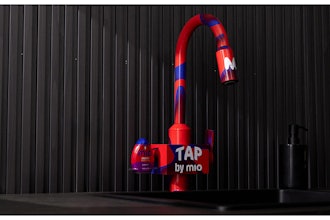As we enter 2019, the majority of manufacturers will continue to be profoundly impacted by digital transformation in one way or another. From automating back-end processes to production and management, technology continues to alter the supply chain.
Thanks to digitization across the supply chain and continuous innovation industry-wide, customer and employee expectations are higher than ever. Implementation of technological solutions and more advanced operations has resulted in an increased demand for personalized services. Businesses have been forced to re-evaluate current processes in order to not only meet customer and employee demands, but also maintain a competitive presence and advantage in the marketplace. How can manufacturers effectively maintain customer loyalty in light of these ongoing transformations?
Adjusting Business Practices to Suit Customer Preferences
In the wake of digital transformation, customer service is a vital facet to maintaining customer relationships and loyalty and therefore should not be ignored. In fact, 84 percent of businesses are aiming to improve the overall customer experience. First and foremost, businesses need to evaluate and anticipate customer needs, not only in their present purchasing state, but considering their future pain points too. As businesses seek to digitize, now more than ever decision makers need to focus on how to improve the customer experience at every touchpoint across the supply chain. Considering tools such as sales order automation software can enable the sales team to focus more of their time on nurturing client relationships. It was predicted that by 2019 businesses would spend 50 percent more budget on improving customer service and the overall experience—which proved to be correct. This statistic delivers an undeniable realty that decision makers can no longer ignore the power and impact of exceptional customer service.
Meeting Changing Customer Expectations
In a world where digital solutions have deterred and discouraged human interaction, it is perhaps surprising that businesses spend $1.3 trillion on customer service calls each year. Further, 54 percent of customers now have higher expectations for customer service compared to one year ago. Therefore, rather than discouraging interpersonal relationships through digital efficiencies, digital transformation should in fact encourage employees to emphasize personal connections with customers.
Consider the following questions: what are your customers seeking in the buying process? Are you anticipating your customer’s needs? Is your CSR team connecting with customers at every possible touchpoint? Are you providing access to informative online resources to answer customer questions such as webinars or blogs? In order to improve the customer experience, the answer to all of these questions hinges on the need for CSRs to be consistently connecting with customers at every touchpoint of the buying cycle.
Automation has enabled businesses to keep up with this trend and offer an improved customer experience. By automating business practices such as administrative order processes, employees can focus their time on value-added tasks such as maintaining and nurturing important customer relationships, in addition to upselling. Businesses need to recognize not only the importance, but the revenue generating power of the CSR team from reduced operating costs. To illustrate the impact automation has on your bottom line, this case study on National Marker Company outlines the impact to their customer base. The company witnessed an improved order cycle time and reduced data entry errors due to automation, giving CSRs more time to build customer relationships.
Using Data and Analytics for Business Advantage
With this abundance of new digital technology comes a plethora of data, both structured and unstructured. Recent research shows that businesses utilize data and analytics for two primary reasons, 63% aim to improve productivity and efficiency while 57 percent are targeting more efficient and accurate decision making. Data and analytics can also offer businesses a solution and valuable insights into customer preferences and characteristics including purchasing habits, order times, order preferences and order volumes.
Through these insights, we can adjust business practices as necessary in order to better serve customer needs and shape their experience. This can be achieved through offering product recommendations, pricing discounts, and reminders to reorder based on customer behaviour. Currently, only 23 percent of companies have the capabilities to incorporate customer data and insights into business models even though 85 percent of marketers have seen the benefits of personalization in the purchase cycle. Possessing an in-depth knowledge into your customer’s preferences and purchasing habits will guarantee that you are best serving your customers while utilizing digital transformation to your advantage.
Businesses will continue to invest in new technologies and decision makers should be focusing on digital transformations that will enable your team to concentrate on developing and maintaining unparalleled customer service. While digital transformations can be daunting, ensuring human contact is maintained throughout the buyer’s cycle will support customer retention in the wake of ongoing business changes this year. Choose to view digital transformation not as a challenge, but as an opportunity to improve, grow and boost revenues as we enter 2019.
Earl van As is vice president of marketing & product management of ecmarket.























